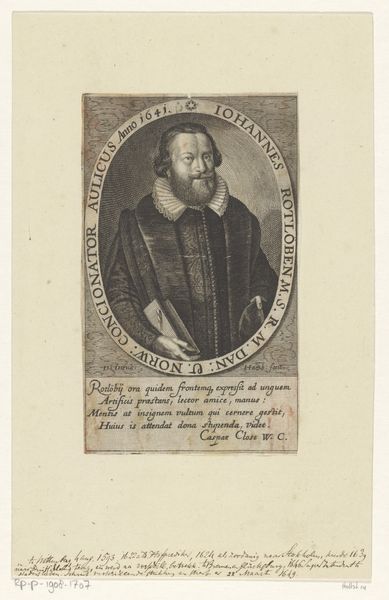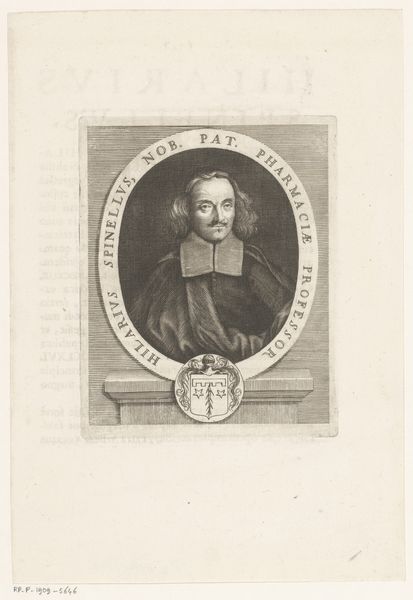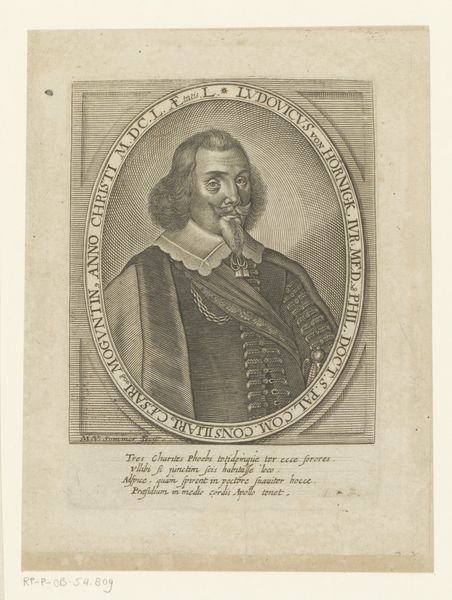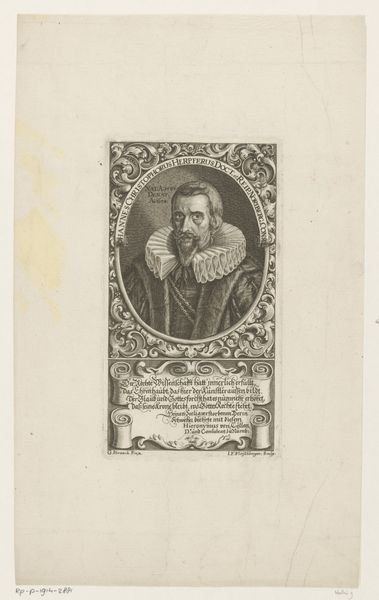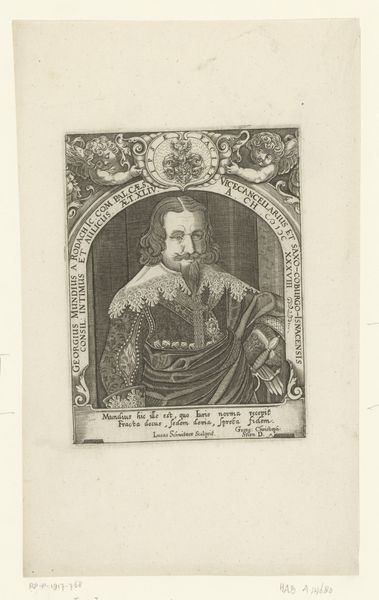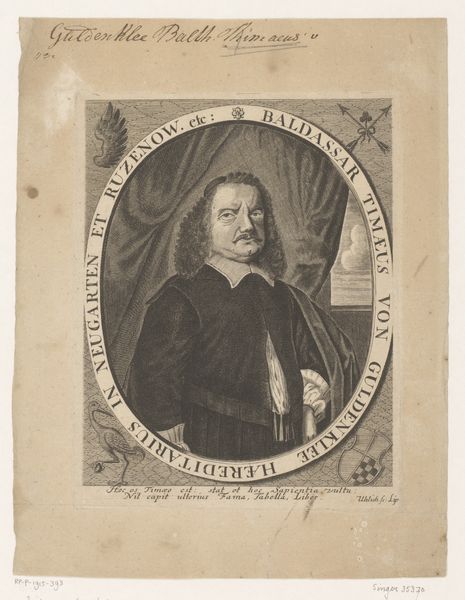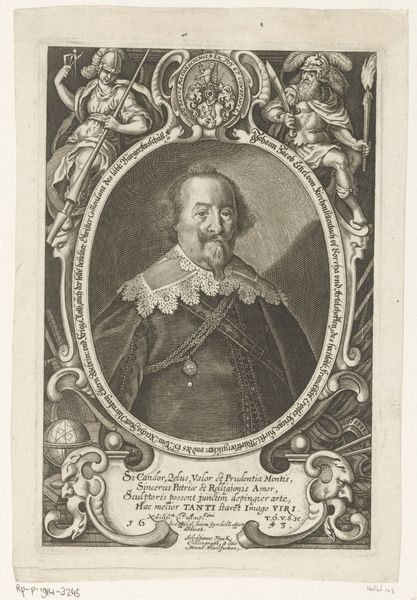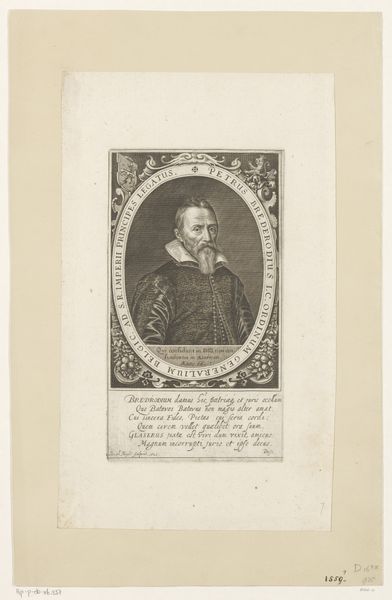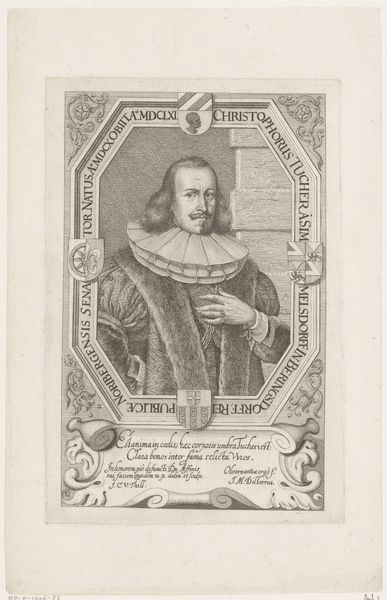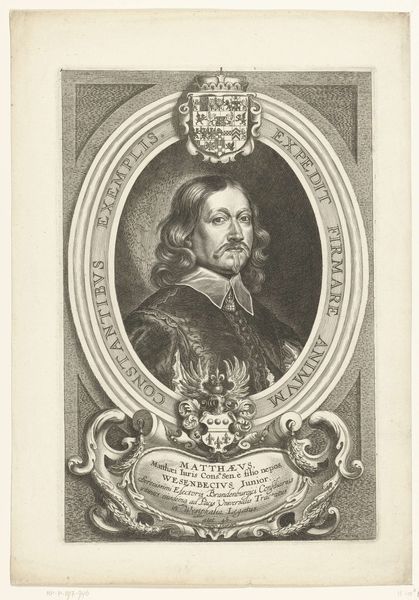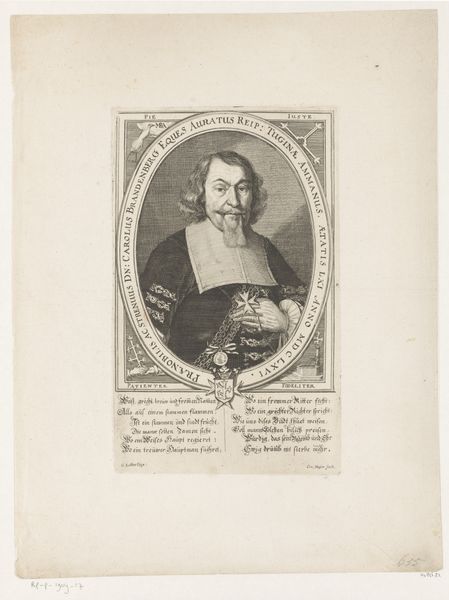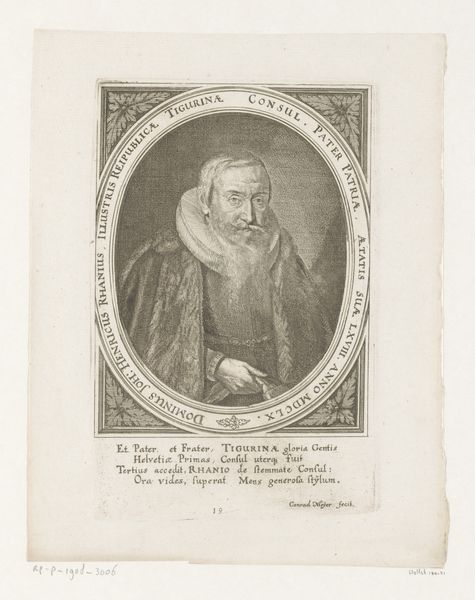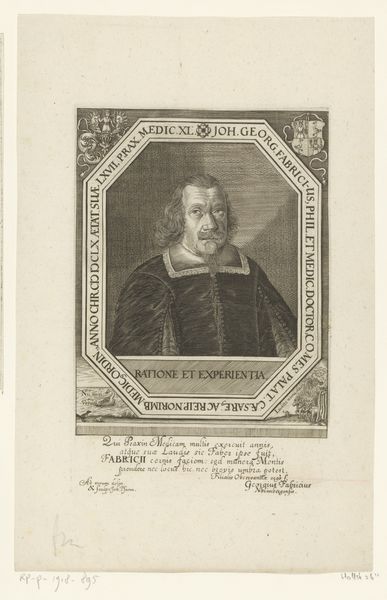
print, engraving
#
portrait
#
aged paper
#
baroque
# print
#
old engraving style
#
engraving
Dimensions: height 193 mm, width 129 mm
Copyright: Rijks Museum: Open Domain
Curator: Here we have a 17th-century engraving titled "Portret van Heinrich Salmuth," made by Kaspar Schultze. It’s quite striking. Editor: It has a somber, almost severe feel. The figure, encased within that oval, and framed by the inscription, it’s quite imposing, isn’t it? The sharp contrast adds to that dramatic, Baroque effect. Curator: The composition definitely speaks to the traditions of Baroque portraiture. The detailed rendering gives Salmuth a significant presence and status, reflecting the conventions used for portraying prominent figures during that time. This approach of ennobling certain social subjects and lineages grew from an aristocratic, almost dynastic ambition. Editor: Absolutely. It also makes you wonder about the choice of symbols. Each of the embellishments framing his face--especially the crests--surely has a specific, possibly familial, significance that contributes to this sense of power and history. Curator: No doubt. Examining Salmuth himself, his position within the courts and bureaucracy of his time also provides insight into the work's broader social purpose. Portraits like these served to affirm power and project the sitter's ideals of leadership or intellect to wider society. Editor: Right, this engraving also suggests something about his personality: the book he holds implies scholarship, maybe even a connection to a religious position; his clothes signify wealth and sobriety. You wonder what Heinrich would think about his life being presented like this, even now. Curator: And, of course, an engraving allows for much wider distribution of this carefully curated image, so even people outside the traditional art-collecting classes get to consume and affirm social values. Editor: Looking closely, one can appreciate the artistry embedded even within such traditional forms. Notice, especially, how certain areas use bolder strokes than others to evoke certain feelings? Curator: Seeing Schultze's technical proficiency also brings us to reflect on the crucial roles printmakers had in creating and dispersing images during that era. Editor: Agreed. These symbols, in this arrangement, were consciously selected and displayed. What stories they might tell. Curator: And together they create a narrative. This detailed print lets us explore the intersections of personal identity, social standing, and the machinery of political power back then. Editor: It makes one grateful for a visual culture that acknowledges diverse and varied identities today.
Comments
No comments
Be the first to comment and join the conversation on the ultimate creative platform.
